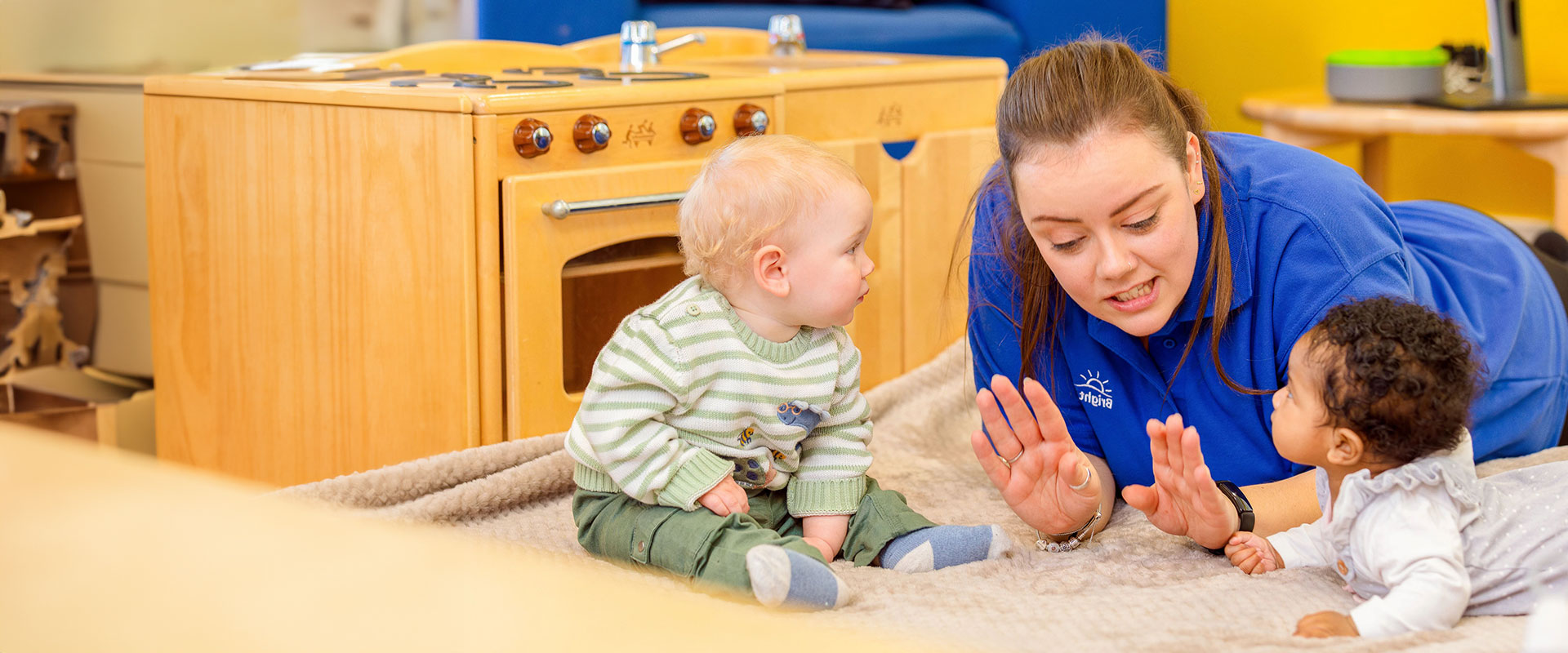What Do Your Baby's Babbles Mean?

A baby’s babble is one of the most delightful sounds to any parent. It’s an exciting time and indicates your child’s readiness and eagerness to start communicating with you. But beyond being cute, babbling is a precursor to language development and a way for them to express themselves, their wants and needs without words. In this article, we’ll delve into the different types of baby babbles and how these play an important role in your child’s journey towards learning to talk.
How Does Babbling Begin?
Babbling is the next stage of your child’s speech development, following on from cries, burps, sighs, gurgles, cooing, squeals, and beginning to giggle, which typically occur between birth and 3 months old. We call this stage ‘jargon’.
The 3 Types of Baby Babbles
When your baby starts to babble, these sounds can be categorised into three types: marginal, canonical, and conversational. Here is what each means…
Marginal Babbling
This is the first phase of babbling and usually starts between 4 and 6 months old, whereby your baby will begin to use vowels more frequently and pair them with consonant sounds. For example, “baaa”, “maaa”, and “um”. Marginal babbling is an important building block contributing towards your baby’s speech development, which naturally progresses to canonical babbling, which more closely resembles actual words.
Canonical Babbling
Canonical babbling usually occurs when your baby is between 6 and 10 months old. Within this, includes reduplicated babbling, where your baby repeats the same syllable, such as “mama” and “dada”, as well as non-reduplicated babbling, also known as variegated babbling. This type of babbling is when your baby creates sequences of different vowel and consonant sounds such as “googoomee" and “ba da ga".
Conversational Babbling
Around the 10-month mark, your baby will likely experience the final phase of babbling, aptly named conversational babbling, mimicking adult speech, using pauses, rhythm, intonation, and turn-taking. At this stage, your baby is yet to use any “real words”, but they’ll likely understand that dialogue entails expression, pause, volume changes, and sometimes even hand gestures.
Responding to Your Baby’s Babbles
As a parent, you play a key role in helping your baby’s speech development. Responding to your baby’s babbles can support them in understanding the structure and sounds of language, the concept of cause and effect, and can be wonderful for bonding too! Here are some top tips on how you can encourage your baby’s babbles.
- Engage in Conversation
It might feel a bit silly at first since your baby won’t be able to respond with words, but it can be helpful to speak to them as though you were having a two-way conversation. Consider asking questions such as “Are you talking?”, “What is it you’re saying?”, and when your baby babbles back, reply as though you understood what they said! We call this ‘serve and return’.
- Be Expressive
Using expressive facial expressions can be a great way to keep your baby engaged while you communicate with one another. You may want to think about using your facials to show your baby that you’re curious, excited, and happy to hear them babbling, also using hand movements to reinforce your message. Holding your baby’s gaze and maintaining eye contact is important, so they learn the etiquette of conversation.
- Imitate Your Baby
By imitating your baby, you can help to encourage them to babble more. It can be a good idea to copy the sounds your baby makes, then expand on this, adding in a new word that includes the same sound in your following sentence. For instance, if they say “ba-ba-ba,” follow up with sounds, like “ba-ba-ball” or "dah-dah-dog.".
- Avoid Interrupting
Try and be patient to give your baby enough time to babble back! Remember, your little communicator is trying to have a conversation with you, so it can be beneficial to show interest by communicating back and forth with them as you would when talking to anyone else.
- Sing!
Why not turn your baby’s babbling into a fun sing-song session? Nursery rhymes can be brilliant for young children, even when they’re babies, with the repetitive and rhythmic nature aiding them to recognise patterns. You may also want to consider simply using a sing-song voice when you’re responding to your baby after they babble. The exaggerated intonation and higher pitch are often more attention-grabbing than regular speech.
If you enjoyed this article and found it to be useful, you can check out more of our early childcare resources in our Family Resource Zone!
And, if you’re not yet a Bright Horizons parent, but are interested in what our nurseries can offer your child on their exciting educational journey, book a personal tour at your local nursery today!





